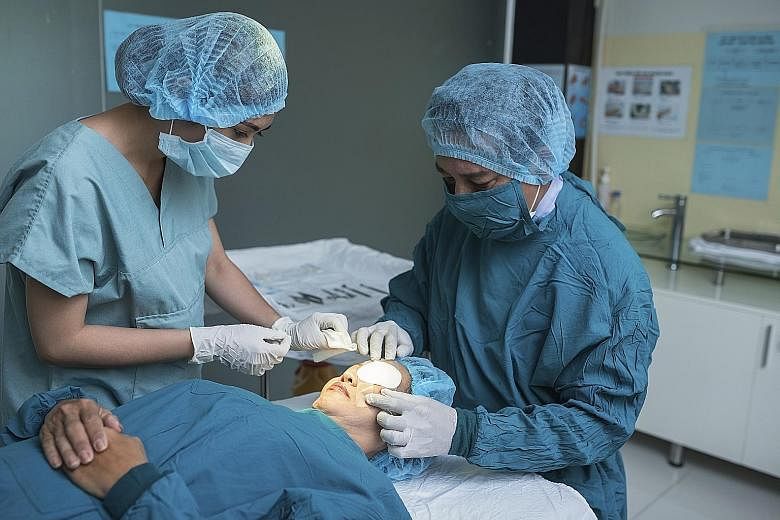Q I had a vitrectomy about two years ago on my right eye, where vitreous gel was removed from the middle of my eye. I also had cataract surgery about six months ago on the same eye.
These two operations were performed at one eye centre.
During a routine follow-up at the centre, both my eyes were found to be in good condition.
However, at another eye centre where I had sought a second opinion, my left eye was found to have a retinal tear, via an "indentation" procedure. I went back to the first centre but was told there was no retinal tear in my left eye.
What should I do?

A The retina is a light-sensitive nerve layer lining the inside surface of the back of the eye.
The vitreous is the gel-like material that fills the inside of your eye.
Ageing, high myopia and trauma can cause the vitreous to become more liquid and shrink.
This contraction can cause the vitreous to separate from the surface of the retina, in some cases, tugging on it with enough force to create a retinal tear.
Certain degenerative conditions of the retina can also cause it to become thin, making the retina more susceptible to holes and tears.
Tears or holes in the retina can occur without any symptoms.
However, contraction and shrinkage of the vitreous can be associated with visual symptoms such as seeing floaters (black dots, lines) in your field of vision or flashing lights.
If you experience symptoms of seeing floaters or flashes, visit your ophthalmologist for a thorough retina examination to check if you have a retinal tear.
Retinal tears are picked up by direct visualisation of the retina through a dilated pupil, using a special instrument consisting of a light attached to a headband and a small hand-held lens.
However, a tear or hole in the retina can occur at the periphery of the eyeball, which can be difficult to detect.
Scleral indentation is a technique that is sometimes used during a retina examination to help doctors better visualise the retinal periphery.
A small metal indenter is used to push in (indent) the wall of the eye from the outside. This brings any peripheral tear or hole into direct view through the pupil.
This way, even small breaks in the very periphery of the retina can be picked up.
If a retinal tear is found, a laser procedure - argon laser photocoagulation - is used to seal it.
This procedure is quick - it takes 10-15 minutes - and does not require any hospitalisation.
If a tear or hole in the retina is not treated early or is left untreated, fluid from the vitreous can seep through the hole and collect behind the retina. This would cause it to detach from the back wall of the eye, much like wallpaper peeling off a wall.
A retinal detachment is an emergency which may lead to partial or complete loss of vision.
Picking up a retinal tear early and sealing it with a simple laser procedure before it progresses to a retinal detachment could preserve your vision.
Once a retinal detachment has occurred, it can be repaired only with surgery.
There is no guarantee as to how well you will see after the operation, as this would depend on the level and duration of damage to the central retina (macula) before surgery.
I would advise you to get another check-up and a third opinion about whether there is a tear in the retina, so that it can be dealt with quickly and appropriately.
Dr Lynn Yeo
Senior consultant eye surgeon at Eagle Eye Centre
GOT A PROBLEM?
E-mail your question to sthealth@sph.com.sg
Specify Ask The Experts as the subject and include your name, age, gender, identity-card number and contact details.

